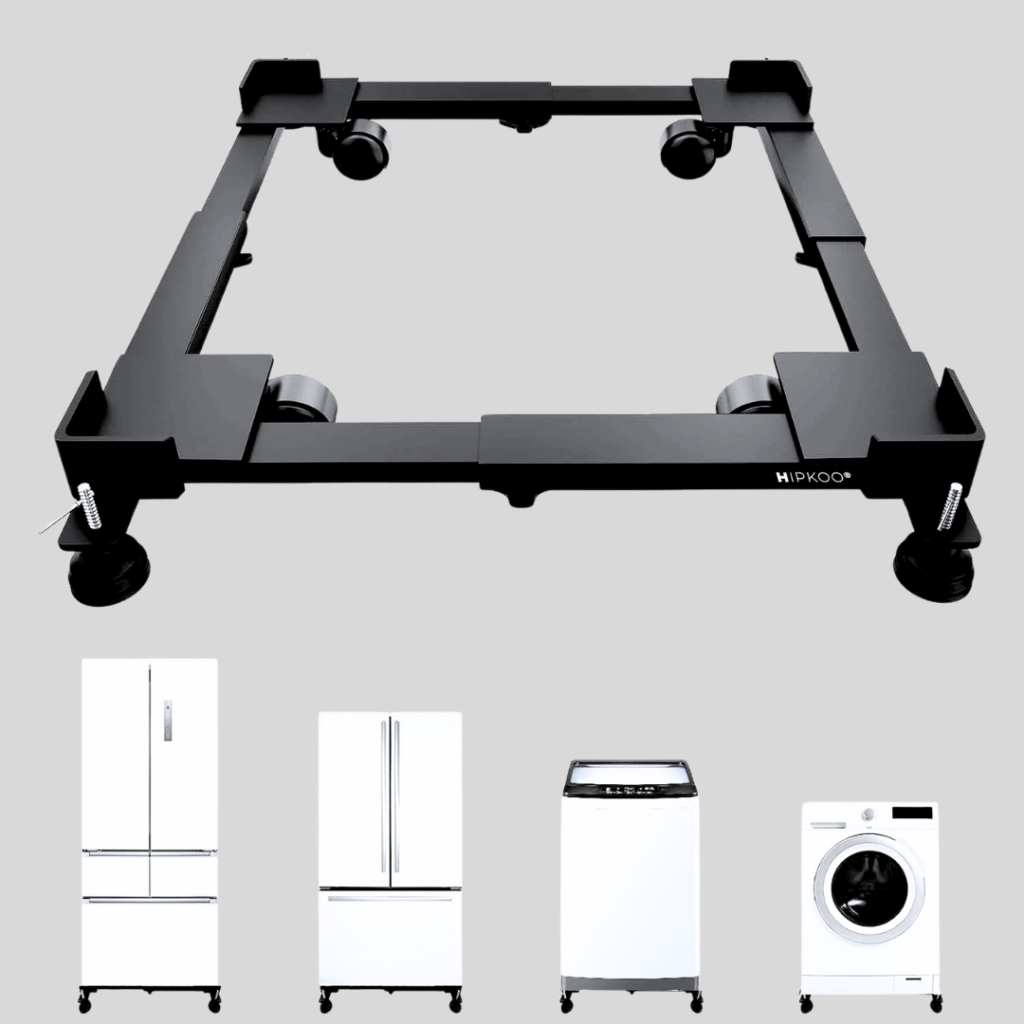Portable dishwashers on wheels are a great addition to any kitchen. They make cleaning up easier, especially in small spaces or rented homes. However, the wheels can wear out over time due to constant movement. If your dishwasher is becoming difficult to push or pull, it might be time to replace the wheels. This guide will show you how to easily replace the wheels on your portable dishwasher on wheels step by step.
In This Article :
Why Do Portable Dishwasher Wheels Wear Out?
Portable dishwashers are designed to move frequently between storage and the sink. Over time, the wheels wear down because of regular use, rough surfaces, or carrying heavy loads. This makes the dishwasher harder to move and can cause further damage if not addressed. Replacing the wheels will help your dishwasher move smoothly again.
Signs Your Dishwasher Wheels Need to be Replaced
Here are some signs that your dishwasher’s wheels are worn out:
- Hard to move: The wheels may be damaged if it’s difficult to push or pull the dishwasher.
- Uneven movement: The wheels could be broken or misaligned if the dishwasher wobbles or tilts while moving.
- Visible wear: If you can see cracks, chips, or flat spots on the wheels, it’s time for a replacement.
- Unusual noises: Strange sounds like grinding or scraping while moving the dishwasher usually mean the wheels aren’t working properly.
What You’ll Need to Replace Dishwasher Wheels
Before getting started, gather the following tools and materials:
- New wheels: Make sure to buy replacement wheels that match your dishwasher model.
- Screwdriver: You may need either a Phillips or flathead screwdriver, depending on your model.
- Pliers: These can help remove stubborn or tightly fitted wheels.
- Wrench: You might need a wrench if nuts or bolts are securing the wheels.
- Protective gloves: Gloves will protect your hands from cuts or scrapes during the process.
- Lubricant (optional): You can use a silicone-based lubricant to help the new wheels roll smoothly.
Step-by-Step Guide to Replacing Wheels on a Portable Dishwasher

Follow these steps to replace the wheels on your portable dishwasher:
1. Unplug the Dishwasher and Prepare the Area
Safety first! Always unplug your dishwasher before starting any repairs. Move the dishwasher to an open space where you can easily access all sides. Lay a towel or cloth on the floor to protect it and keep small parts from getting lost.
2. Identify Which Wheels to Replace
Turn the dishwasher onto its side or back to inspect the wheels. Look closely to see which wheels are damaged and need replacing. You might only need to replace a few, or it might be best to replace all of them at once.
3. Remove the Old Wheels
Use your screwdriver or wrench to carefully remove the screws or nuts holding the old wheels in place. If any wheels are stuck, use pliers to gently loosen them. Set aside the screws and old wheels for disposal.
Tip: Take a picture of the wheels before removing them so you know how to attach the new ones later.
4. Attach the New Wheels
Line up the new wheels with the spots where the old ones were attached. Secure them using the screws or nuts you saved earlier. Tighten the screws, but not too much—over-tightening can damage the wheels or the dishwasher frame.
5. Test the New Wheels
Once all the new wheels are attached, stand the dishwasher upright again. Gently push it across the floor to see if it moves smoothly. If it still wobbles or feels uneven, check to make sure all the wheels are aligned and tightened correctly.
6. Apply Lubricant (Optional)
For smoother movement, you can apply a small amount of silicone lubricant to the axles or rolling parts of the wheels. Just be careful not to use too much, as it could attract dust and dirt.
Common Problems and Solutions When Replacing Wheels
Even though replacing the wheels is generally easy, you might run into a few problems. Here’s how to fix some common issues:
1. Rusted or Stubborn Screws
If the screws holding the wheels are rusted or stuck, apply a little WD-40 or penetrating oil to loosen them. Let it sit for a few minutes before trying again.
2. Trouble Finding Replacement Wheels
Not all dishwasher models use the same wheels. Check your dishwasher’s manual or the manufacturer’s website to find compatible parts. You can also take an old wheel to a local appliance store to find a match.
3. Dishwasher Still Wobbles After Replacing Wheels
If the dishwasher isn’t moving smoothly after the wheel replacement, check that the new wheels are aligned correctly and that all screws are tightened evenly.
Tips to Keep Your Dishwasher Wheels in Good Condition
Here’s how to make your new wheels last longer:
1. Move the Dishwasher Gently
Avoid pushing or pulling the dishwasher too hard or too fast. Be especially careful when moving it over rough surfaces or thresholds to prevent damage.
2. Clean the Wheels Regularly
Dust, dirt, and food crumbs can build up around the wheels, causing them to wear out faster. Wipe the wheels down regularly to keep them clean and functioning well.
3. Don’t Overload the Dishwasher
Overloading the dishwasher puts extra pressure on the wheels, making them wear out more quickly. Stick to recommended load sizes to reduce the strain on the wheels.
Conclusion
Replacing the wheels on your portable dishwasher on wheels is a simple task that can improve the appliance’s performance and mobility. By following this guide, you can easily replace the wheels and keep your dishwasher working like new. Regular maintenance, such as cleaning the wheels and moving the appliance carefully, will help extend its lifespan and keep your dishwasher rolling smoothly for years to come.
